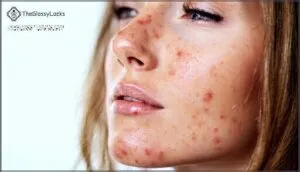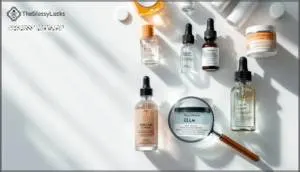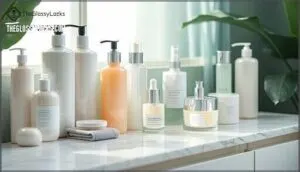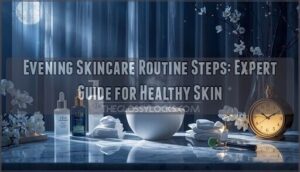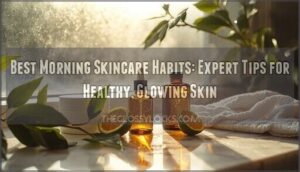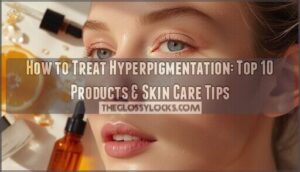This site is supported by our readers. We may earn a commission, at no cost to you, if you purchase through links.
 Your face might betray you faster than you think. A clinical study found that facial skin reacts to allergens up to three times faster than other body areas due to its thinner epidermis and higher density of immune cells. That red, itchy rash after trying a "gentle" moisturizer? It’s your skin’s alarm system detecting ingredients it considers threats.
Your face might betray you faster than you think. A clinical study found that facial skin reacts to allergens up to three times faster than other body areas due to its thinner epidermis and higher density of immune cells. That red, itchy rash after trying a "gentle" moisturizer? It’s your skin’s alarm system detecting ingredients it considers threats.
The problem is that "hypoallergenic" on a label doesn’t guarantee safety—the term has no federal regulation, leaving consumers to navigate a market where claims often outpace scientific scrutiny. Understanding what truly makes hypoallergenic skin care for face effective requires looking past marketing promises and into the actual formulations that contact your most visible, vulnerable skin every day.
Table Of Contents
Key Takeaways
- "Hypoallergenic" is an unregulated marketing term with no FDA definition or standardized testing requirements, meaning products labeled this way can still contain common allergens and trigger reactions on facial skin.
- Facial skin reacts to allergens up to three times faster than other body areas due to its thinner epidermis and higher immune cell density, making ingredient scrutiny more critical than trusting product claims.
- Effective allergen avoidance requires reading ingredient lists in concentration order, performing 48-hour patch tests on the inner forearm before facial application, and tracking personal reaction patterns rather than relying on "fragrance-free" or "hypoallergenic" labels alone.
- Consulting both dermatologists and allergists provides the most comprehensive approach to managing facial allergies, combining topical treatment expertise with specific allergen identification and environmental control strategies.
What Does Hypoallergenic Skin Care Mean?
Choosing skin care for sensitive faces can feel confusing, especially when you see the word "hypoallergenic" on every shelf. It’s important to know what that word really means for your skin.
Let’s look at the essentials before you pick your next product.
Definition and Usage of "Hypoallergenic
If you’ve ever seen the word "hypoallergenic" on a skin care label and wondered what it really promises, you’re definitely not alone. The meaning of hypoallergenic is surprisingly slippery—a term with variable meaning and no standards behind it.
Most often, it signals a marketing tactic, framing product claims to shape consumer perception without a clear definition or federal regulations guiding its use.
Lack of Standardization and Regulations
Here’s where things get murky: no federal government standard or regulatory definition backs up “hypoallergenic” on product labeling. Labeling loopholes make it easy for brands to skip industry compliance, and regulatory oversight is spotty at best. Testing inconsistencies remain common.
For real consumer protection and awareness, you’re left relying on your own scrutiny rather than strong federal regulations. Because the term isn’t regulated, consumers should understand what hypoallergenic means.
Common Misconceptions About Hypoallergenic Claims
It’s easy to think anything labeled “hypoallergenic” is completely safe, but that label often creates a false sense of security. Misleading labels and the absence of certain ingredients don’t guarantee safety or prevent an allergic reaction.
The truth? There’s no FDA-backed universal solution. That’s why decoding ingredient labels matters more than trusting buzzwords—false advertising can slip past even the most diligent shopper.
Without FDA standards, reading ingredient labels matters more than trusting hypoallergenic claims that can mislead even careful shoppers
Who Should Consider Hypoallergenic Products
If you find that your skin throws a fit after trying new products, or you’re always checking labels for hidden triggers, you might want to look for options designed with sensitive folks in mind. Hypoallergenic products are especially helpful for people who:
- Have sensitive skin types or skin conditions
- Need allergy prevention or fragrance avoidance
- React to common skincare ingredients
- Prefer gentle, non-irritating formulas
How Allergies Affect Facial Skin
Your face is often the first place allergies show up. Some reactions are easy to spot, but others can be more subtle or severe.
Here’s what you need to know before looking at the most common ways allergies can affect your skin.
Types of Allergic Reactions on The Face
Have you ever noticed your skin suddenly itching, swelling, or breaking out in hives after using a new product? These are all signs of facial allergic reactions. Common symptoms include redness, burning, and bumps—sometimes escalating to anaphylactic shock, though rarely.
Here’s a glance at typical reactions and what they look and feel like:
| Reaction Type | Symptoms | Example |
|---|---|---|
| Facial Hives | Itchy, raised welts | Fresh moisturizer |
| Allergic Contact Dermatitis | Red, swollen, flaky | Perfumed skin cream |
| Skin Irritation | Burning, stinging | Retinol serum |
| Facial Eczema | Scaly, red patches | New face wash |
| Anaphylactic Shock | Swelling, trouble breathing | Rare—seek help fast |
Common Skin Allergens in Cosmetics
Hidden trouble often lurks in the fine print: Preservative Allergies from formaldehyde-releasing agents, Fragrance Sensitivity to hidden scents, Metal Toxicity from nickel and cobalt, Dye Allergens in colorants, and harsh Chemical Irritants—all can trigger a skin allergy. Even “hypoallergenic” cosmetics may contain these allergens, so read those ingredient lists carefully to avoid an allergic reaction.
Understanding common beauty allergens is essential for making informed decisions about skincare products.
Symptoms Ranging From Mild to Severe
Your skin’s reaction to an allergen can run the gamut from a gentle tingle to a full-blown emergency, reminding you just how unpredictable allergies can be. Mild reactions might show up as subtle itchiness, a slight rash, or contact dermatitis.
More severe responses—like intense skin irritation—signal your body’s alarm against allergic triggers. Recognizing these symptoms is your first shield.
Anaphylaxis and When to Seek Help
When an allergic reaction shifts into high gear and puts your whole body on alert, knowing the warning signs of anaphylaxis could truly make all the difference. Look out for:
- Swelling of lips or face, trouble breathing
- Dizziness or rapid heartbeat
- Sudden rash or hives
If you spot these anaphylaxis signs, seek immediate medical intervention—call for emergency response.
Decoding Skin Care Product Labels
Understanding what’s on a skin care label can feel like reading a foreign language. Knowing what those words mean makes it easier to pick products that are right for you.
Here’s what to look for next time you turn over the bottle.
Ingredient List Analysis and Order
If you’ve ever wondered how to spot potential trouble in a bottle, start with the ingredient list—it tells you more than most labels will admit. Product labels rank ingredients by concentration levels, placing the most abundant first.
Careful ingredient list analysis helps with allergen identification, label decoding, and even quick toxicity checks—all essential steps for choosing truly hypoallergenic skin care.
Interpreting Chemical and Latin Names
Trying to make sense of ingredient lists can feel like reading a foreign language, especially when chemical and Latin names pop up on the label. Chemical nomenclature and Latin terminology are part of cosmetic labeling—think “tocopherol” for vitamin E or “Prunus Amygdalus Dulcis” for sweet almond oil.
Decoding these helps with allergen identification and separates marketing myths from real hypoallergenic options.
Identifying Active Vs. Inactive Ingredients
Once you’ve learned to spot those complicated names, the next step is sorting out which ingredients actually do the heavy lifting—and which ones are just along for the ride. Use ingredient list analysis to tell the actives from the extras. Here’s how to make sense of it all:
- Actives solve specific skin concerns.
- Inactives support product formulation.
- Noncomedogenic actives reduce breakouts.
- Watch for hidden allergens in both categories.
Recognizing Allergen Warnings and Claims
Allergen warnings aren’t required on most cosmetics, even those labeled hypoallergenic. The FDA mandates ingredient transparency through descending concentration lists, but cosmetic regulations don’t demand specific allergen callouts yet. Fragrance disclosure often hides multiple allergens under "parfum" or "fragrance."
Patch testing remains your best defense—dermatologists recommend trying samples first and documenting any allergic reaction. With upcoming allergen labeling changes expected after 2026, ingredient list analysis and awareness matter more than marketing claims.
Choosing The Right Hypoallergenic Products
Now that you understand what to look for on product labels, it’s time to make smart choices for your face. The right hypoallergenic products depend on your specific needs and how you’ll use them.
Let’s look at the key categories you should consider when building your skin care routine.
Skin Cleansers for Sensitive Skin
Cleansers are the foundation of any effective sensitive skin routine, but the wrong formula can trigger irritation before you even finish washing your face. Look for fragrance-free, nonirritating formulas that respect your skin’s pH balance.
When selecting hypoallergenic skin cleansers for sensitive skin, prioritize these features:
- Gentle exfoliants instead of harsh scrubs
- Natural soaps free from synthetic detergents
- Fragrance-free formulations without masking agents
- pH-balanced solutions matching skin’s natural acidity
- Minimal ingredient lists you can actually pronounce
Your cleanser shouldn’t leave your face tight or red—that’s irritation, not cleanliness.
Moisturizers and Face Creams
After cleansing, your skin needs hydration that won’t undo all your careful work avoiding irritants. Choose hypoallergenic moisturizers with minimal, fragrance-free formulas that lock in moisture without triggering reactions.
Your face cream should soothe, not sensitize.
| Feature | Why It Matters |
|---|---|
| Fragrance-free | Prevents common allergic responses |
| Simple ingredients | Easier to identify allergens |
| Nonirritating emollients | Calms sensitive skin |
| Labeled "hypoallergenic" | Suggests gentler formulas |
Selecting Hair and Body Care for Facial Use
Your shampoo and body wash may work wonders from the neck down, but that doesn’t mean they belong anywhere near your face. Facial skin is thinner and more reactive than body skin. Even hypoallergenic hair and body products can contain ingredients too harsh for sensitive facial areas.
Look for fragrance-free options specifically formulated for faces, with gentle cleansers and natural ingredients that won’t compromise your skin care routine.
Empowering Consumers for Safe Skin Care
Protecting your skin starts with knowing what triggers reactions and how to avoid them. You have the power to make safer choices when you understand your own skin and the products you use.
The following steps will help you navigate skin care with confidence and reduce your risk of allergic reactions.
Tips for Avoiding Allergic Reactions
Reading labels carefully is your strongest defense against unwanted skin reactions. Here’s how to protect your face from allergens:
- Patch testing: Apply new products to your inner forearm for 48 hours before using them on your face
- Allergen avoidance: Track ingredients that trigger your allergic reaction and check every product label
- Cross-contamination: Use separate applicators to prevent spreading allergens between products
- Symptom tracking: Document when reactions occur to identify patterns
- Emergency plans: Keep antihistamines accessible for unexpected responses
Your skin’s safety depends on consistent vigilance.
Consulting Dermatologists and Allergists
When should you seek specialist referrals for persistent facial allergies? Dermatologists address 70% of atopic dermatitis cases, while allergists contribute unique expertise in environmental controls and allergen identification.
Collaborative care between these specialists guarantees thorough treatment approaches combining moisturizers, topical therapy, and patient education. Your dermatologist can guide you toward hypoallergenic products suited for sensitive skin, while an allergist identifies specific triggers causing your reactions.
Making Informed Choices for Sensitive Skin
Smart product selection starts with knowing what’s actually in the bottle—and whether "hypoallergenic" on the label matches what your skin needs. Ingredient research and reading ingredient lists give you real consumer awareness. Patch testing new products helps prevent reactions before they happen.
Look for brand transparency in product descriptions, and consider a comprehensive approach that combines sensitive skin products with guidance from specialists. Having product alternatives ready protects your skin when reactions occur.
Frequently Asked Questions (FAQs)
What patch test should I do first?
Before you invest in a full-sized product, perform a patch test behind your ear or on your inner forearm. Apply a small amount of the hypoallergenic product, cover it with a bandage, and wait 24-48 hours to check for redness or itching.
Are natural ingredients always safer for skin?
Not necessarily. Plant-based ingredients can trigger allergies—poison ivy is natural, after all. Processing impact and dosage matters more than ingredient origins.
Check the ingredient list carefully, even on fragrance-free, hypoallergenic sensitive skin care products.
How long until allergic symptoms appear?
Like a switch that flips at different speeds for different people, allergic reaction timing varies widely. Symptoms can surface within minutes of exposure or take hours to days.
Individual sensitivity and allergen type determine when adverse skin reactions become noticeable, making identifying allergy triggers challenging without careful observation.
Can hypoallergenic products expire or spoil?
Yes, hypoallergenic cosmetics expire. Ingredient degradation reduces product stability, and efficacy changes occur over time. Storage conditions affect shelf life.
Check expiration dates on cosmetic product labeling to avoid adverse reactions from cosmetics, per FDA regulations on cosmetics assuring cosmetic ingredient safety.
Do fragrance-free and unscented mean the same?
Don’t be fooled—fragrance-free and unscented aren’t the same. Unscented products often contain masking scents to hide ingredient odors, creating hidden fragrances that trigger reactions.
Fragrance-free means no added fragrances, making them truly nonirritating for sensitive skin care and hypoallergenic needs.
Conclusion
Marketing promises clash with medical reality regarding facial skin protection. Your face contains higher immune cell concentrations than most body areas, making ingredient selection critical rather than optional.
Understanding hypoallergenic skin care for the face requires moving beyond unregulated labels to examine actual formulations. Patch testing, consulting dermatologists, and reading ingredient lists transforms you from passive consumer to informed decision-maker.
Your skin’s defense system works constantly—give it products that work with it, not against it.
- https://www.fda.gov/cosmetics/labeling/claims/ucm2005203.htm
- https://www.ncbi.nlm.nih.gov/pmc/articles/PMC4625730/
- https://docs.google.com/forms/d/1GAQr3Kn1cURCVHUA82hAga1Wv8DCH0IuqDLRUrOpN7M/viewform?ts=63f4f653&entry.1515682415=https://www.merriam-webster.com/dictionary%2Fhypoallergenic
- https://premium.britannica.com/mw-unabridged/?utm_source=mw&utm_medium=inline-def&utm_campaign=evergreen
- https://basic-maintenance.com/blogs/afq/the-truth-about-hypoallergenic-products-what-hypoallergenic-really-means

